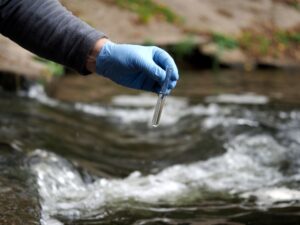On March 14, 2024, EPA Administrator Michael Regan signed a final rule requiring certain facilities to develop facility response plans (FRP) for a worst-case discharge of Clean Water Act (CWA) hazardous substances or the threat of such a discharge.
Worst-case discharges are defined as the largest foreseeable discharge in adverse weather conditions, including extreme weather conditions due to climate change. Facilities subject to the rule are required to prepare response plans in the event of worst-case discharges or the threat of such discharges and submit them to the EPA.
“These protections build on EPA’s recent issuance of the ‘Safer Communities by Chemical Accident Prevention Rule,’ which contains the strongest ever safety provisions to prevent and address explosions and other accidental airborne releases from chemical facilities,” an Agency news release states. “The science is clear: climate change can supercharge the risks of dangerous chemical releases. That is why both actions require facilities to evaluate those risks and to plan for and respond to such releases. Both actions also strengthen protections for communities already overburdened by pollution because many regulated facilities [are] located in or near these communities.”
“As climate change increases the frequency and severity of extreme weather events, planning and preparedness for these incidents are especially important,” Clifford Villa, EPA deputy assistant administrator for the Office of Land and Emergency Management, says in the Agency news release. “These new requirements will help protect the environment and communities by ensuring that facilities have planned for and can respond to worst-case discharges of hazardous substances, particularly in communities with environmental justice concerns, which are disproportionately located in proximity to industrial facilities.”
The FRP requirements apply to facilities that could reasonably be expected to cause substantial harm to the environment based on their location. These include facilities with a maximum on-site quantity of a CWA hazardous substance that meets or exceeds threshold quantities—located within a 0.5-mile radius of a navigable water or a conveyance to a navigable water—and that meets one or more substantial harm criteria.
FRPs help facilities ensure there are plans in place to respond to a worst-case discharge of hazardous substances. The final rule requires various components to be addressed in the FRPs, including hazard evaluations, personnel roles and responsibilities, response actions, and drills and exercises.
“EPA anticipates that approximately 5,400 facilities will meet the criteria to submit a facility response plan,” the Agency news release adds. “Additionally, the final rule provides a process for EPA Regional Administrators to assess facilities on a case-by-case basis and, if appropriate, to require a facility to develop a response plan based on, among other things, concerns related to potential impacts of a worst-case discharge on communities with environmental justice concerns.”
Rule background
CWA Section 311(j)(5) directs the president to issue regulations requiring a facility owner or the operator of a facility to prepare and submit to the EPA a plan for responding, to the maximum extent practicable, to a worst-case discharge and to a substantial threat of such a discharge of oil or a hazardous substance.
In 1994, the EPA promulgated regulations for worst-case discharges of oil under 40 Code of Federal Regulations (CFR) Part 112, Subpart D. This action regulates worst-case discharges of CWA hazardous substances from onshore, non-transportation-related facilities under Section 311(j)(5).
Effective date and additional resources
The final rule is effective May 28, 2024. Regulated entities must submit FRPs to the EPA within 36 months of this date.

